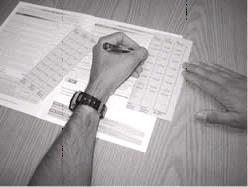Introduction to the SFA-AT, Project OATS Version
The field of assistive technology has very few assessment instruments that measure the outcomes of using assistive technology as an intervention for people with disabilities. The paucity of instrumentation is true across populations and settings, including students in the school systems. The SFA-AT research instrument was developed as a part of an activity called Project OATS (Outcomes of Assistive Technology in the Schools), sponsored by Wisconsin CESA #1 and the Wisconsin Department of Public Instruction.

While validation studies continue to be in demand for the SFA-AT, the authors of the supplement believe that the instrument should be made available. Besides meeting the frequent requests to see the instrument, we want to prompt exploration of using the instrument and solicit feedback from practitioners.
Several documents are available from this web site including the instructions for using the SFA-AT, the scoring supplemental pages that are used in conjunction with the standard SFA forms available from Harcourt Assessment, Inc. (Coster, W.J., Deeney, T., Haltiwanger, J. & Haley, S.M. (1998). School Function Assessment. San Antonio, TX: Harcourt Assessment.
We appreciate your interest in the SFA-AT, encourage your examination of the instrument for its appropriateness with your population of students, and would appreciate any comment and feedback you can provide related to this instrumentation.
NOTE: As with any assessment instrument, particularly those being developed or in research versions, please use responsible decision-making pertaining to its application and interpretation. While the authors strongly stand behind the concept of the SFA-AT and that the need for measuring assistive technology outcome is substantial, the numbers resulting from the use of the SFA-AT must be interpreted and applied cautiously. Without question, however, we are confident that the use of the SFA-AT provides a valid mechanism for thinking through the effects of assistive technology in the school setting. This is true even without any numerical interpretation of the data
ACKNOWLEDGEMENTS: We express our deepest gratitude to the authors of the School Function Assessment published by the Harcourt Assessments, Inc. In the mid-1990s Coster, W.J., Deeney, T., Haltiwanger, J. & Haley, S.M. showed an enlightened vision for the development of the tool that has become an important assessment instrument for the fields of special education and related therapies.





